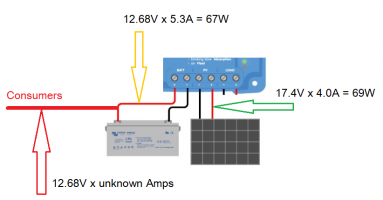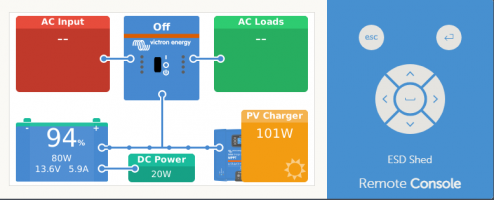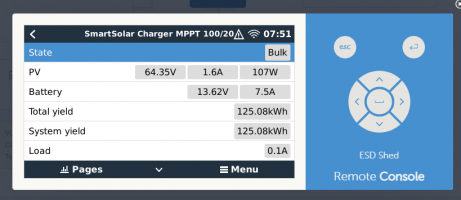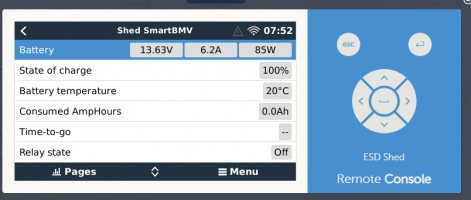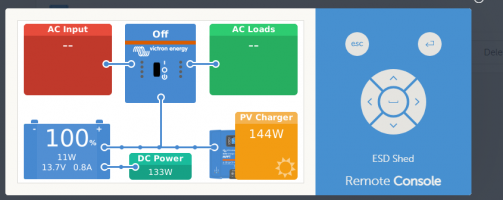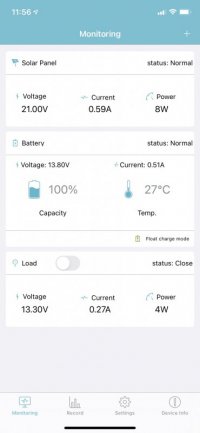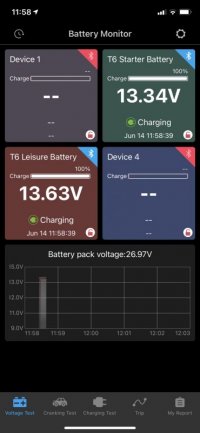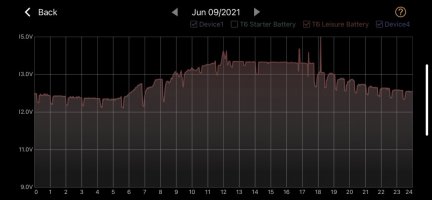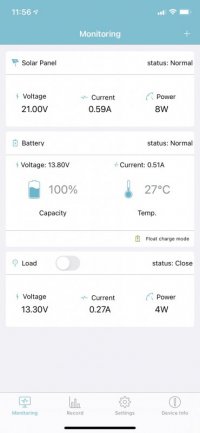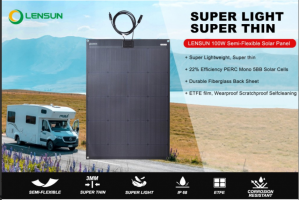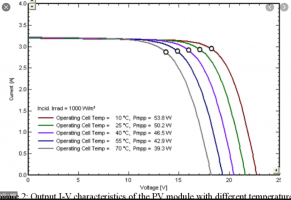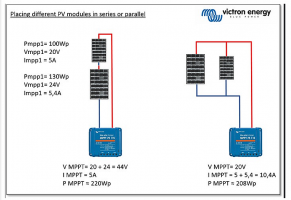@EdH
see below.
++++
Yes the big circle shows the wattage that is being produced from the solar kit and being delivered to the load
(RED)
the figure is delivered from W=V*A from the box bellow.
++++
The
(GREEN) box shows the detailed view of where the Watts ( w=v*a) is coming from.
in your case it shows that your solar panel is developing 17.4V @ 4.0A being produced.
++++
The
(YELLOW) box details what the victron MPPT solar controller is doing with the available power - ie outputting as a charger.
you case shows that it is charging the battery in FLOAT mode.
The charge has a multi stage algorithm that will determine the best charge for your battery.
jn this case its charging the battery with a voltage of 12.68v with a current of 5.30A
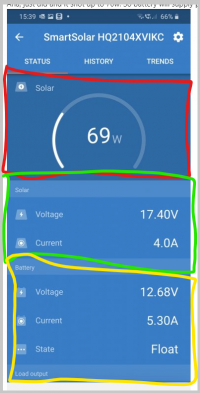
+++++++++++++++
the way that it works is the sun will generate a voltage on the PV panels.
The MPPT charger will check the battery voltage and decide if it needs charging or not. . .
if NOT then the MPPT will show FLOAT and deliver a very low charge to the battery - the net effect will be that the WATTS will be shown as very low. (even in bright sunshine)(
BUT . . .
If the battery is LOW, or you have a large LOAD running in the van, this will draw a current from the battery . . this in tern will cause a "volt drop" across the battery terminals.
The MPPT will detect the "volt drop" and kick into life, trying to charge the battery back up to FLOAT voltage.
it will do this by converting as much solar PV volts & amps into battery charging volts & AMPS as determine by the MPPT charger algorithm (and user settings) this will give you a bigger WATTS number.
++++
so if you want to see big numbers then you need to run the battery down a bit or run some large loads - like a tyre inflator or similar high current.
if the battery is fully charged you may only see 4W - float,
if the battery is fully charged and you draw 100w for you leisure system - the solar will kick in try to give you that 100w - bulk charge.
+++++
FWIW - when testing setups i like to see what the max i can get out of a setup . .
so i connect a 1000w inverter and run a mains heat gun, 100w lightbulbs etc etc etc . . . . to put a massive load across the battery, this causes a large volt drop accross the battery. - this will intern make the solar setup give out 100%
+++
as a rough guide you can get around 6A per 100w on a good system - theoretical values under test conditions.
realistically you should expect 50-75% of that in the UK depending on sun.
++++
so your 69W look about right.
you might be able to eeek out some more watts by angling the panels so they are perpendicular to the sun.
but . .
the easiest way is to double up the panels. . so two of your panels should gwt you 69w + 69w = 138W
.



